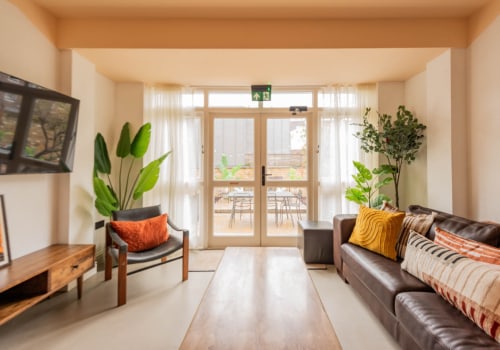You need a certain number of. Starting small is the right way to build a brand, but it's hard to make it a profitable business. You need a certain number of rooms for your unit's economy to work. Living together is a modern form of community living in which residents get a private room in a furnished house with shared common areas.
Living together is popular in major cities as an affordable way of life for students, workers, digital nomads, or people moving. Unlike the traditional apartment lifestyle, living together is attractive to renters because of affordability, flexibility, included amenities, and sense of community. The facility also has a common reading room and television area, and we enjoy the weekly events that are organized here. If we had to rent a normal apartment in the same area, it would have cost us around 25,000 rupees just for the house (a BHK), plus an additional 8,000 rupees for each one to pay bills and other facilities.
In addition, we would have had to bear the costs of moving our belongings. My roommate and I save almost 8,000 rupees every month, says Amrutha Kosuru, who has rented a shared house in Gachibowli, in Hyderabad. Living together generally offers a 20 to 30 percent discount on the total cost of housing, compared to studio products per unit; lease terms are usually nine to 12 months, including three-, six-month leases, and short-term stays; living space in India means a group of apartments with common shared services. I know that guy.
Do your part and do your part to keep the living space clean, tidy and pleasant to live in. If you're staying in a space where you live with other digital nomads and remote workers, it can be a great way to establish professional and personal connections. I'll explain what you should expect and what are the differences between staying in hostels and living spaces. Together, these three factors (demographic changes and lifestyle factors, an evolving definition of work, and a responsive real estate market backed by investors who are capitalizing on reduced risk and quick profits) have made the business models behind these coworking and coliving spaces much more attractive and able to meet the demand for physical locations where single workers can connect with others, achieve their professional goals and live the life they want.
Many people choose not to worry about these details and that's why most small living spaces fail. Since many people reserve living spaces per month, the people you live with become a tight-knit community. Plus, many living spaces already have some kind of community, so it's really up to you to find one that fits your lifestyle. If you travel frequently for work, or maybe you have flexible hours during part of the year, a living space is likely to be useful for you. In general, living spaces are quieter and the people who stay in them don't focus on going out to party every night.
Living spaces also flexibly span the gamut: some offer multiple rental options, and night, weekly and monthly residents all reside together. This was my experience, but then, when I visited other living spaces and spoke with other operators, I learned that co-working areas are almost always underutilized. Living spaces are a wonderful option for someone who travels alone, but doesn't necessarily love being alone all the time. Think of them as if you were renting an apartment month to month, but that apartment is a room in a space of coexistence.











